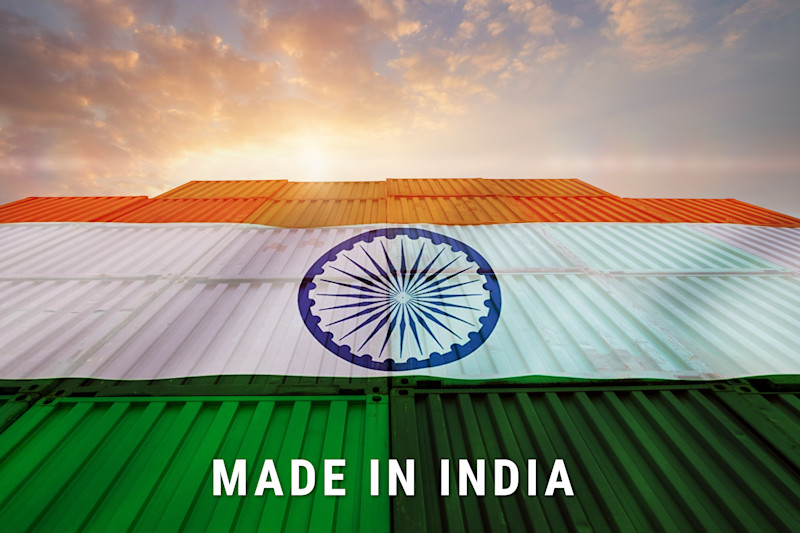Pandemic-induced shutdowns throughout India profoundly impacted the automotive industry. The Society of Indian Automobile Manufacturers (SIAM) estimated that the auto industry lost roughly US$300,000 in production turnover for every day of closure due to lockdown (Handa, 2020).
The Indian market was already observing a decrease in vehicle demand pre-COVID-19; the closure of manufacturing facilities, a reserved outlook on expenses, and weakened domestic and international demand combined to set back the growth of the auto industry’s sales volume by three to four years (Reuters, 2020).
In line with the global auto industry trend of pushing for electric vehicles into the market, India has begun its shift into electric and hybrid vehicle production. The Indian government and automakers alike are in the process of funding expansion in R&D for electric vehicle production and pursuing strategic initiatives to extend production capacity in existing manufacturing facilities. To create the shift into EV production sooner, the Indian government adopted stricter emissions standards, which resulted in higher prices for internal combustion engine vehicles.
India's rural areas have shown promise in their demand for commercial vehicles and farm equipment for agricultural use (ETMarkets.com, 2020). The growth in rural demand is associated with higher government spending; thus, rural vehicle demand may continue to grow during the crop harvesting seasons in India. Rural regions are also recovering more quickly from the widespread pandemic and are resuming business operations in their "new normal." Mahindra and Mahindra's Farm Equipment sector saw total sales of tractors (domestic and exports) at 25,402 units in July 2020, as compared to 19,174 units for the same month the previous year (ETMarkets.com, 2020). Other notable vehicle demands were for two-wheelers, and Hero MotoCorp reached up to 90% of its pre-COVID-19 level demand just from the rural region alone (Bhatia, 2020). For short to intermediate time frames, vehicle demand in rural areas is forecasted to continue to rise as operations resume post-pandemic.
Urban demand for automobiles has been showing a recovery as lockdowns are being lifted within those areas. Automakers are seeing vehicle inquiries and bookings equivalent to roughly 85% of pre-COVID-19 levels (Singh, 2020). People returning to work in populated cities will no longer want to rely on public transport for the intermediate- to long-term. As a result, there have been steady increases in vehicle purchases within the mini- and compact-car and compact-SUV sectors. Maruti Suzuki India LTD reported that its portfolio of compact vehicles contributed to 72% of sales in June 2020; companies that did not have compact cars in their portfolio saw little to no improvement in sales (Singh, 2020). The focus on expanding production capacity for compact vehicles will be a prominent trend for supplying domestic demand as business operations throughout the country resume at its own pace.
Supply Chain Operational Shifts
As India navigates recovery from the impact of COVID-19, automakers are attempting to pursue localization for their value chains, implement digitization efforts, and incorporate Industry 4.0 efforts to shop floors (Mishra, 2020). Localization for auto and auto parts in India will allow for improvements in supply chain resiliency as it will enable India to wean off auto part import dependency from China and create substitution efforts domestically. Along with this shift, the Indian government is attracting larger companies to invest in India and partake in auto and auto part manufacturing locally to keep costs low for efficiency. Indian automakers want to incorporate thorough adoption of Industry 4.0. CV Raman, the Senior Executive Director of Maruti Suzuki India LTD, states that automakers are working toward eliminating inefficiencies and unlocking potential along their value chains domestically (ET Auto, 2020).
As more companies enter the Indian market to develop R&D and manufacturing hubs, it is important to note that continued advancements in technological efforts throughout the value chain may increase the labor costs in this market. With technologies getting more advanced, ample workforce training will need to take place to account for the best efficiencies possible. Automakers should anticipate an increase in labor costs in the intermediate- to long-term future. The process of synchronization across the value chains in India's auto industry will take time; however, India's auto market FDIs will be aimed toward purchasing manufacturing technologies to advance the various players in the supply network to maintain the pursuit of the global trends in the automotive manufacturing industry. India is ready to push its market as the next best option to China, and it will need to show that its technological advancements are on par with a country labeled a "global manufacturing center."
The information provided in this article is based on research and report provided by George Washington University – CIBER Bootcamp and commissioned by IBDGi on behalf of AMT for the publication of the white paper Views on the Manufacturing Technology Supply Chain and International Trade: Changes in the Global Supply Chain, the International Manufacturing Industry, and the Demand of MT Equipment. To access the full white paper, click here.
References
Bhatia, S. (2020, July 2). Auto Sales Analysis: Domestic sales in red; consumer sentiments recover in June 2020. The Economic Times Auto. https://auto.economictimes.indiatimes.com/news/industry/auto-sales-analysis-domestic-sales-in-red-consumer-sentiments-recover-in-june-2020/76736314
ET Auto. (2020, May 27). Adopt virtual manufacturing to build resilience in the time of crisis: CV Raman. ET Auto. https://www.youtube.com/watch?v=fQemt6fGjME
ET Markets. (2020, August 2). Auto sales show a solid bounce in July; tractors in a fast lane. The Economic Times. https://economictimes.indiatimes.com/markets/stocks/news/auto-sales-decline-from-a-year-ago-as-covid-19-hurts-tractors-buck-the-trend/articleshow/77301363.cms
Handa, R. (2020, May 25). Opinion: Reviving Indian auto industry post-COVID-19 by taking cue from global measures & assessing industry's demands. ET Auto. https://auto.economictimes.indiatimes.com/news/industry/opinion-reviving-indian-auto-industry-post-covid-19-by-taking-cue-from-global-measures-assessing-industrys-demands/75970309
Mishra, S. (2020, March 23). Indian auto industry may suffer an estimated revenue loss of Rs 15,000 crore. ET Auto. https://auto.economictimes.indiatimes.com/news/industry/coronavirus-impact-indian-auto-industry-to-suffer-an-estimated-loss-of-rs-15000-crore-by-march-31/74762851
Reuters. (2020, July 14). India's auto sales volume will take 3-4 years to recover: Industry body. The Economic Times. https://economictimes.indiatimes.com/industry/auto/auto-news/indias-auto-sales-volume-will-take-3-4-years-to-recover-industry-body/articleshow/76956273.cms
Singh, S. (2020, July 2). Explained: What is fuelling the auto sector recovery in India? The Indian Express. https://indianexpress.com/article/explained/explained-what-is-fuelling-the-auto-sector-recovery-in-india-6486873/






